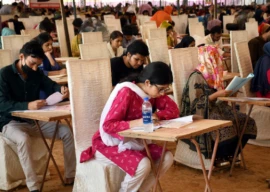
Earnings per share (EPS) stood at Rs1.10 compared to Rs2.50 in the previous year.
However, the company did well in the second quarter (Oct-Dec) in which it earned Rs429 million, up 4% compared to Rs414 million in the second quarter of FY14.
“Much of this has happened because of the appreciation of the rupee against the dollar in 2014 that made our exports expensive,” Gul Ahmed Textile Mills Executive Director Ziad Bashir told The Express Tribune.
Moreover, there is a significant contribution of the global economic slowdown including China that has adversely affected the company’s exports to different markets, he added.
However, pointing to the 4% uptick in profit in the second quarter, he said that things are coming back to normal and an improvement is expected in coming months. Bashir said that he is confident the company holds a bright future because of the investment that his firm has made especially in the last few months.
“Cognisant of the local and global challenges, we are working hard and focusing on value addition to make the most of our resources.”
The government has to see how it can help the textile industry cope with current problems, especially when India and Bangladesh are giving incentives to their textile industries owing to global challenges, Bashir stressed.

Composite textile mills have been pressing the government to support value addition so that the country can create new jobs. Unlike the spinning industry, they argue, the manufacturing units of value-added textile products not only require less energy but are also labour-intensive – a formula that has worked wonders for Bangladesh in the last 20 years.
“With a big population and a power crisis, the value-added textile industry can help Pakistan as it accommodates two to three employees per machine and consumes less energy,” said Bashir.
Published in The Express Tribune, March 3rd, 2015.
Like Business on Facebook, follow @TribuneBiz on Twitter to stay informed and join in the conversation.

1735196035-0/beyonce-(7)1735196035-0-165x106.webp)




1730379446-0/WhatsApp-Image-2024-10-31-at-17-56-13-(1)1730379446-0-270x192.webp)




1735025557-0/Untitled-(96)1735025557-0-270x192.webp)











COMMENTS
Comments are moderated and generally will be posted if they are on-topic and not abusive.
For more information, please see our Comments FAQ